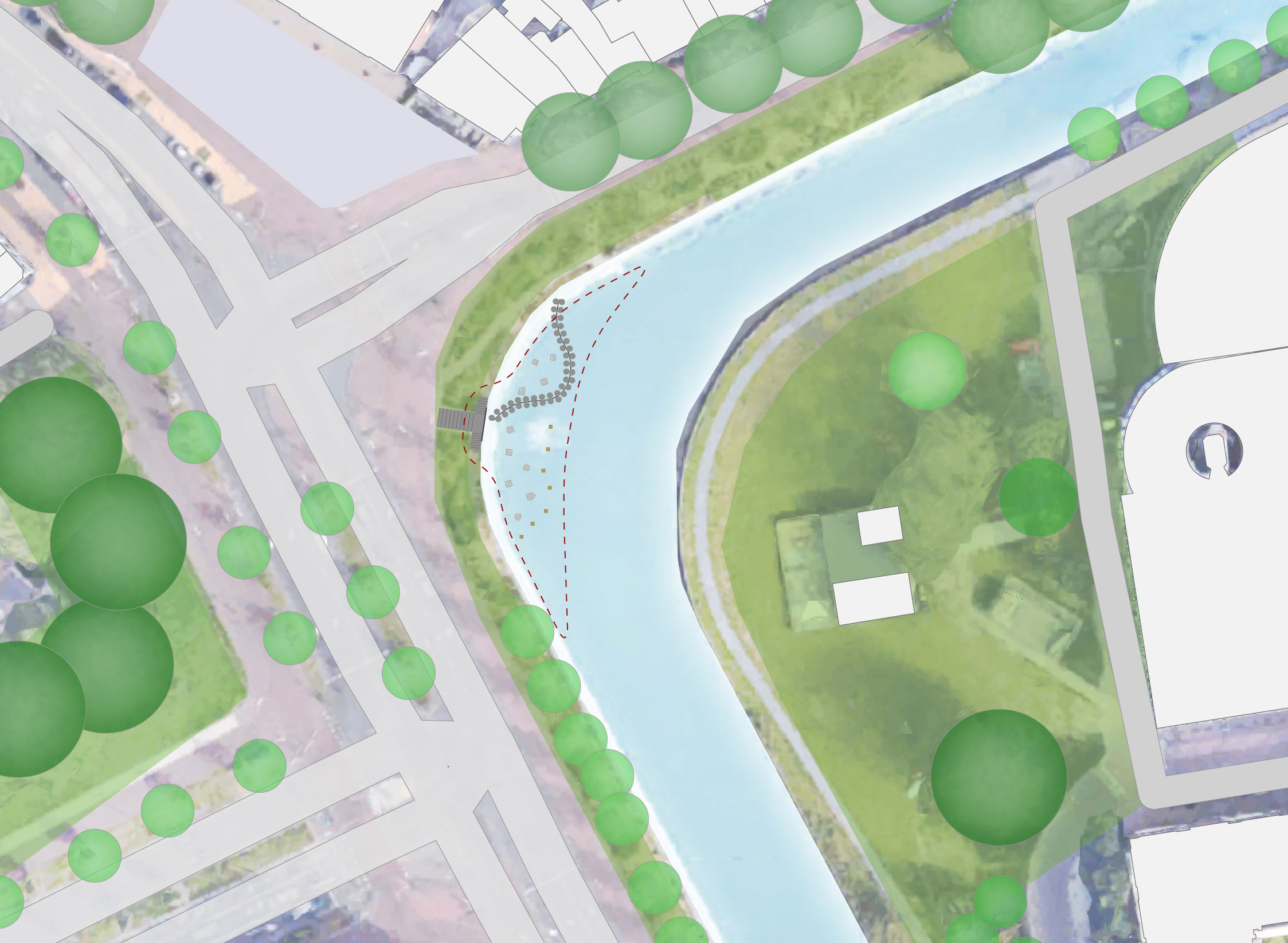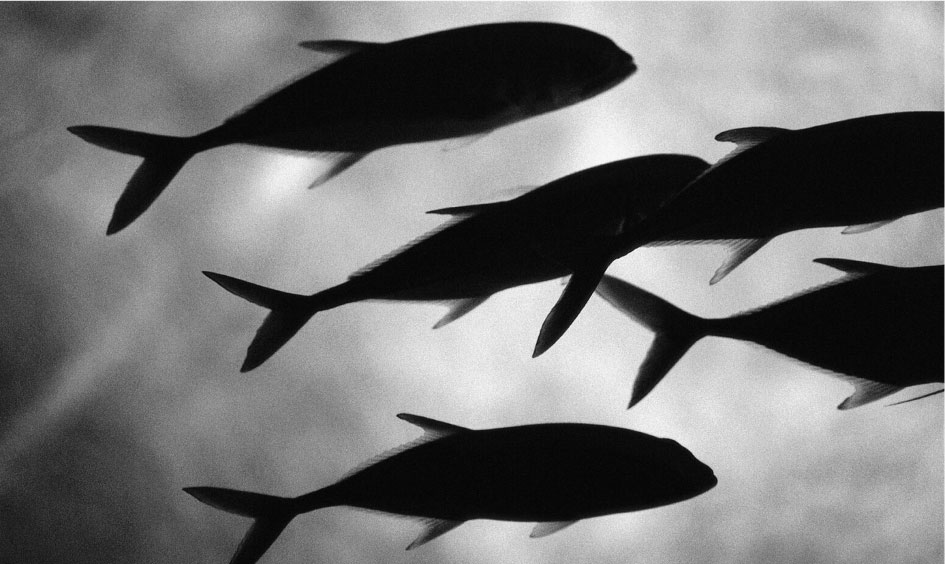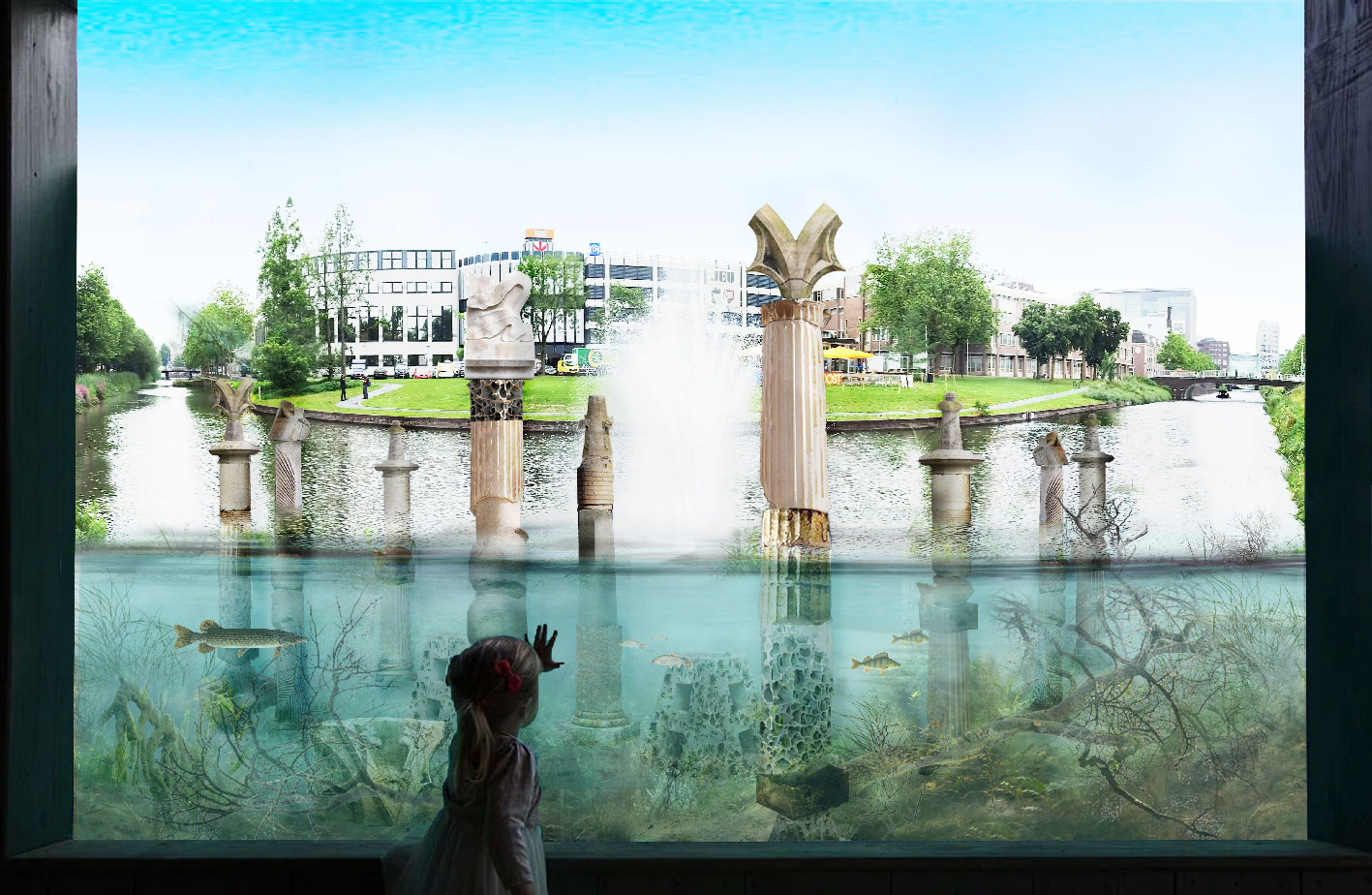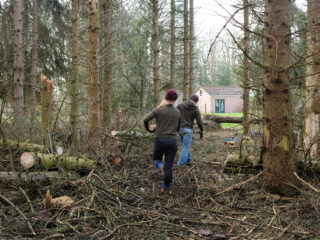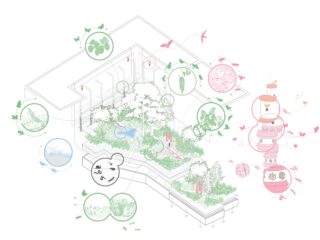A reef for underwater species
DOMunderwater is a new icon in the Domcity: a sweetwater reef, build with old stones and ornaments from the Domtower. The aim is to stimulate underwater life and let the inhabitant of Utrecht have a peak underwater. The natural stone blocks contain a lot of ‘structure’ which makes them an attractive habitat for fish and other water organisms.
Water as the heart of Utrecht
Over 2.000 years ago the Romans build their first settlement in what we know today as the city of Utrecht. Down stream (‘Uut’) of a wadable place (‘trecht’) in the river Rijn. This place was the connection for people from both sides of the river. The water and the course of the river forms the origin and the center of Utrecht. The ‘Oudegracht’ still connects the people of Utrecht, and forms the connection between the rivers the Vecht and the Kromme Rijn. With that the city center of Utrecht functions as ecological connection for all life in the rivers, which is invisible for the human eye. This story could not be told better than by DOMUnderwater.
Need for more ‘structure’ underwater
The underwater ecosystem is building itself up from nutrients to zooplankton, macrofauna, fish and to birds and mammals like the otter. Next to clean water and food, macrofauna and fish need underwater structure like water plants, dead wood or stones. These structures provide attachment-, food-, and hiding places. The water quality in Utrecht’s channels is good, but at this moment there is hardly any structure and habitat available. That’s what the sweet water reef, build with old stones and ornaments from the Domtower is designed for to provide.
Design elements
The towers build out of Dom stones provide a new habitat for underwater life and are a sculptural hotspot for passersby. The tip of these towers rise above the water’s surface, with the most beautiful ornaments exhibited as crown pieces. The towers are a mix of original ornaments and reused Dom materials, which provide surfaces for the growth of water plants. As enrichment other structures are placed on the bottom of the channel, like dead wood and a pathway of stepping stones. Last but not least there are binoculars to have a look at what happens under the water’s surface.





